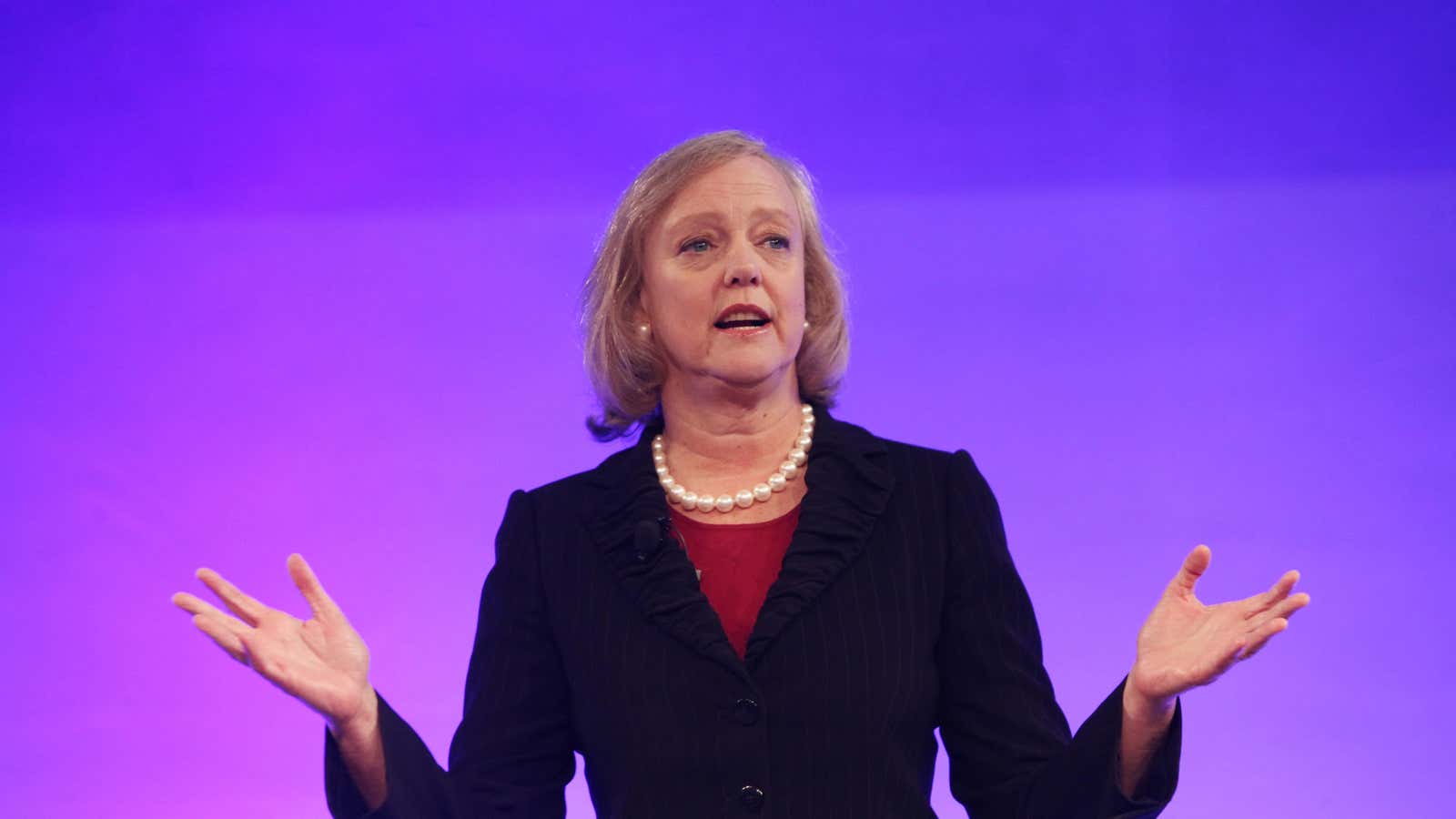Something that didn’t make it into the official transcript of yesterday’s earnings call with Hewlett-Packard CEO Meg Whitman was her enthusiasm for HP’s recently rolled out “Instant Ink” program. Instant Ink is HP’s effort to get people to subscribe to printer ink, thus locking consumers into making a purchase every month by default. Printing is still 22% of HP’s revenue, and Whitman has said that the company needs to increase revenue in this area.
Instant Ink requires that users invest a lot of trust in HP. For the system to work, their wired Instant Ink-enabled printer must tell HP how many pages they’re printing every month, and HP sends ink as needed. It’s a bit like the telecoms’ model of pricing, in which you pay according to a fixed monthly plan, and additional pages (or minutes or texts) cost more. For example, under a basic plan, Instant Ink customers pay $2.99 per month for 100 pages worth of printing (in black and white or color). HP then charges $1 for each additional 15 pages printed. The company also borrowed the “rollover” concept from mobile carriers; unused pages can be carried into the next month. But if user behavior for printing follows that of telecom customers, HP Instant Ink customers could end up overpaying. That might be because they opt for an overly roomy plan that they underuse, or because they have a spike of over-usage that drives them into a higher-volume plan that they rarely exhaust.
During the call Whitman also highlighted HP’s “Ink Advantage” program, which is HP’s way of re-branding its own line of ink cartridges, based on the idea that they last longer than HP’s previous ink cartridges. The program asserts that “HP printers perform better with Original HP Ink,” which is likely an attempt to cut into the substantial market for less expensive ink for HP printers.
The added convenience offered by Instant Ink may be enough to lure customers who care less about price. If HP can convince users that subscribing to official HP ink is worth that convenience, it might make a difference to the company’s bottom line. But the world is inching toward tablets and various versions of the paperless office. So in the end, the maneuver may merely allow HP to decline a little more slowly.
